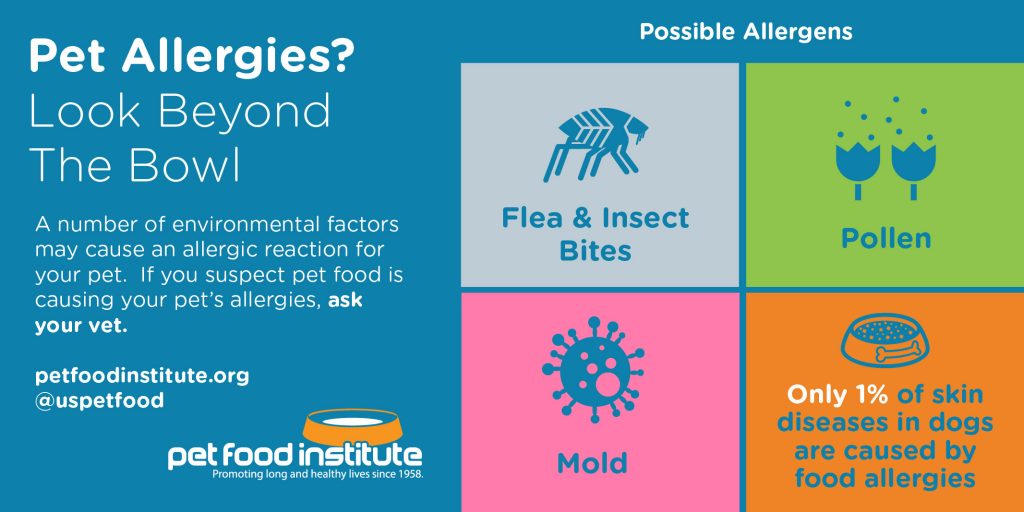Nothing is worse than loving dogs and not being able to spend time with them, and this is an all-too-common problem among people who have dog allergies. You’ll know if you’re allergic based on some telltale dog allergy symptoms, but how do you get through it if you start to experience them? For those who have allergies, it’s important to know the symptoms and find ways that they can be treated. This article gives you easy-to-follow tips to reduce your exposure and to prevent dog allergies from manifesting.
What Are the Symptoms?

Not all people are aware that they’re allergic until they spend time with a dog that sets off their allergies. This type of allergy is basically the same as a common nasal allergy. When you come into contact with a dog, you tend to cough and wheeze. Your eyes look red and feel itchy, and you tend to get a runny nose. Apart from these symptoms, there are individuals who may experience skin reactions. When a dog licks them, their skin may turn red. In worse cases, there are even people who develop hives. If you have asthma, the symptoms can be really serious. As such, it’s important to know if you have pet allergies so you can find remedies and avoid the triggers. It’s also important to remember that you can develop allergies to dogs at any time in your life, even if you haven’t experienced them before.
What Are the Causes?

Maybe you’ve heard of “hypoallergenic” dog breeds, and you might wonder why they apparently don’t trigger allergies while there are others that do. Some people think that dogs that are shorthaired are relatively safer compared to dogs that have long or bushy fur. But according to experts, it doesn’t matter—both can still trigger allergic symptoms. The only difference is that the coat types may release various levels of allergens into the air. There’s a misconception that people are allergic to the hair; this isn’t the case.
Essentially, people can be allergic to a dog’s dead skin flakes, saliva, and urine. Any dog, whether it is shorthaired or longhaired, can trigger an allergic reaction because all dogs shed dead skin, lick themselves, and relieve themselves. Those who have pet allergies have sensitive immune systems. What happens is that their bodies overreact, even to substances that are harmless. Even if it is just dog dander, the tendency of their immune systems is to respond, attack, and treat it as if the dander is bacteria or viruses instead. When a person starts to sneeze and gets watery eyes, the body is responding with an attempt to remove the allergen.
Dog Allergy Testing
How do people know if they have dog allergies? Doctors can conduct different tests to determine this, but you’ll probably start to experience symptoms before you consider speaking with your physician. These tests might include skin tests or blood tests. Experts believe that people who weren’t exposed to animals before age two are more prone to develop allergies to cats or dogs, but this is not always the case. There are some people who think that they’re allergic to dogs, when in fact they’re not. So, it always helps that you undergo the tests to see if you have allergies. However, it’s important to note that these tests are not always conclusive. If you have a dog, your doctor might recommend that you live without your pet for a while in order to see how your symptoms change.
Dog Allergy Treatment
via bloglovin.com
If you’re diagnosed with a dog allergy, you may have to take certain medications, especially if you live with a dog. One treatment is through the use of antihistamines. They block your body’s natural chemicals that trigger the allergy symptoms. Antihistamines are readily available over the counter. Brands like Claritin and Benadryl are some of the best products for this purpose. But, just to be sure, it’s definitely best to ask for your doctor’s recommendation before buying. If you prefer to use nasal sprays, you can go for antihistamines like Astelin. Another treatment for dog allergies is decongestants. They work by reducing the swelling in your nose to relieve congestion. Brand names include Allegra D and Sudafed.
Another recommended treatment might be for you to have allergy shots. The only downsides of this treatment are that it doesn’t always work or last a long time, and it may require a full course, which can take years. Your doctor will know if this is your best option.
When to See a Doctor
Some of the signs and symptoms of dog allergies are similar to those of the common cold. It can be quite difficult to know if you’re just experiencing a transient illness or an actual pet allergy. If you notice that the symptoms persist for a long time while you’re around animals, then chances are high that you might have a pet allergy.
Useful Tips

Taking medication can definitely help. But then again, the best way to avoid a reaction is for you to avoid contact with dogs. If you can, keep your distance from any dog you see. As much as possible, do not pet or even touch a dog if your allergies are severe. If you’re going to a friend’s house and she has a dog, ask her to keep the dog in another room where you won’t go. Another useful tip is that, when you know you’ll be seeing a dog, you should start taking medicine a few days beforehand. By taking the medications prescribed by your doctor, you can stop allergic reactions from happening.
Individuals who have allergies are really sensitive. As such, you should make sure that your place is clean. You need to sweep the floor, use the vacuum cleaner, and even clean the furniture just to ensure that everything is neat and clean, especially if you live with a dog. Regarding your vacuum, it helps to have one with a HEPA filter. A vacuum with a HEPA filter catches and traps allergens, and normal vacuum bags may release the dander back into the air in your home.
If you have a dog and end up diagnosed with a dog allergy, you’ll have to make some life changes, but it doesn’t always necessarily mean you’ll need to get rid of your beloved companion. Speak with your physician to learn more about your options.
FAQ
How do you know if you have allergies from dogs?
A pet allergy is an allergic reaction to proteins found in an animal’s skin cells, saliva, or urine. Signs of an animal allergy include those common to hay fever, such as sneezing and a runny nose. Some people may also show signs of asthma, such as wheezing and shortness of breath.
How do you treat dog allergies?
7 tips for dealing with pet allergies
– Wash. Ideally, bathe your pets once or twice a week.
– Declare the room as a pet-free area.
– Brush or comb regularly.
– Clean and collect.
– Use an air filter to trap allergens.
– Consider the entire environment.
– Get medical help.
How long does it take for dog allergy symptoms to go away?
Treat allergic reactions
–
– In general, symptoms take about eight weeks to disappear. You should also check the ingredients list of any type of food or treat your pet eats to determine the exact substance.
What is the most common dog allergy?
Skin allergies, called allergic dermatitis, are the most common type of allergic reaction in dogs.
Can dog allergies make you feel sick?
Dog and cat allergies are very common. Allergy symptoms caused by pets can include a runny nose, nasal congestion, sneezing, itchy eyes, wheezing, chest tightness, coughing, itching, and headaches. If these symptoms worsen with contact with pets, they may indicate a possible pet allergy.

0 Comments